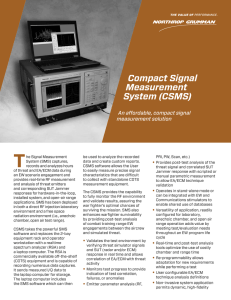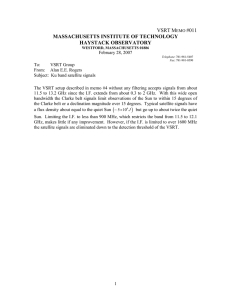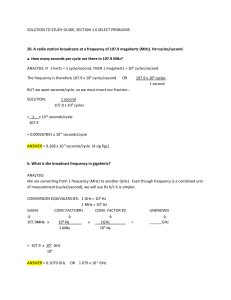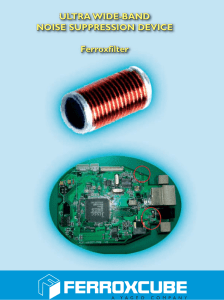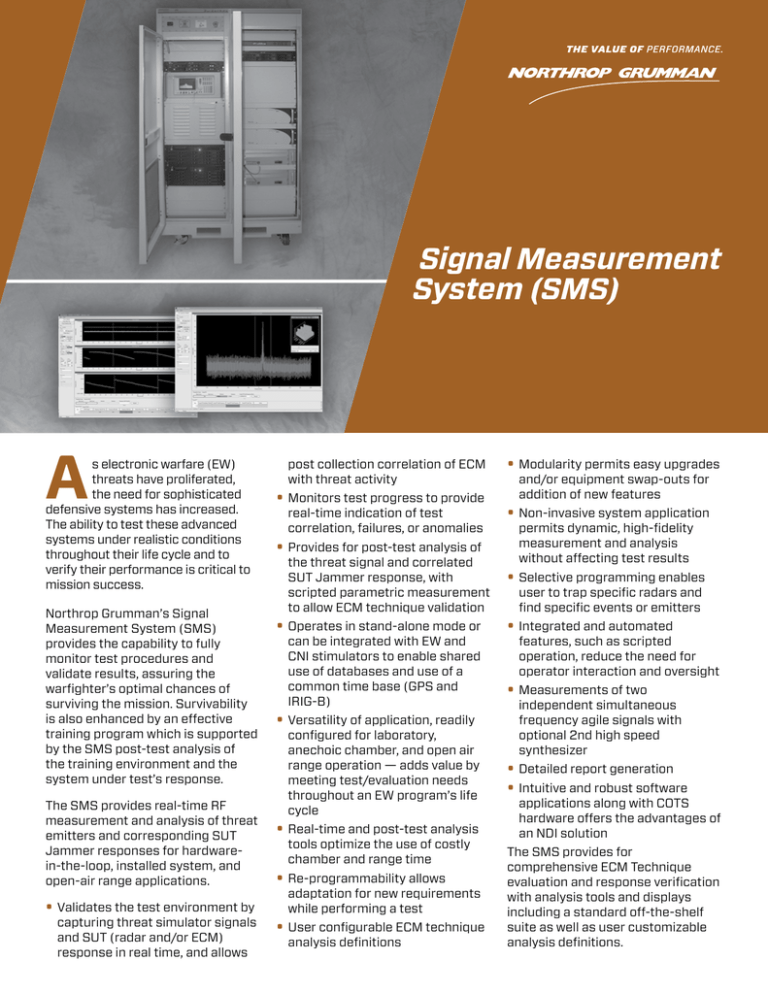
Signal Measurement
System (SMS)
A
s electronic warfare (EW)
threats have proliferated,
the need for sophisticated
defensive systems has increased.
The ability to test these advanced
systems under realistic conditions
throughout their life cycle and to
verify their performance is critical to
mission success.
Northrop Grumman’s Signal
Measurement System (SMS)
provides the capability to fully
monitor test procedures and
validate results, assuring the
warfighter’s optimal chances of
surviving the mission. Survivability
is also enhanced by an effective
training program which is supported
by the SMS post-test analysis of
the training environment and the
system under test’s response.
The SMS provides real-time RF
measurement and analysis of threat
emitters and corresponding SUT
Jammer responses for hardwarein-the-loop, installed system, and
open-air range applications.
• Validates the test environment by
capturing threat simulator signals
and SUT (radar and/or ECM)
response in real time, and allows
post collection correlation of ECM
with threat activity
• Monitors test progress to provide
real-time indication of test
correlation, failures, or anomalies
• Provides for post-test analysis of
the threat signal and correlated
SUT Jammer response, with
scripted parametric measurement
to allow ECM technique validation
• Operates in stand-alone mode or
can be integrated with EW and
CNI stimulators to enable shared
use of databases and use of a
common time base (GPS and
IRIG-B)
• Versatility of application, readily
configured for laboratory,
anechoic chamber, and open air
range operation — adds value by
meeting test/evaluation needs
throughout an EW program’s life
cycle
• Real-time and post-test analysis
tools optimize the use of costly
chamber and range time
• Re-programmability allows
adaptation for new requirements
while performing a test
• User configurable ECM technique
analysis definitions
• Modularity permits easy upgrades
and/or equipment swap-outs for
addition of new features
• Non-invasive system application
permits dynamic, high-fidelity
measurement and analysis
without affecting test results
• Selective programming enables
user to trap specific radars and
find specific events or emitters
• Integrated and automated
features, such as scripted
operation, reduce the need for
operator interaction and oversight
• Measurements of two
independent simultaneous
frequency agile signals with
optional 2nd high speed
synthesizer
• Detailed report generation
• Intuitive and robust software
applications along with COTS
hardware offers the advantages of
an NDI solution
The SMS provides for
comprehensive ECM Technique
evaluation and response verification
with analysis tools and displays
including a standard off-the-shelf
suite as well as user customizable
analysis definitions.
Measured Parameters
ECM Technique Analysis Tools and Displays
Range Gate Pull Off (RGPO)
Coordinated
RGPO
Random Range
Program
(RANRAP)
Velocity Gate Pull Off (VGPO)
Swept Square
Wave
Blinking
Noise
- Doppler
- Range Gated
- CW
- Frequency
Locked (FL)
- Spot
- Barrage
- Swept
- Cover Pulse
Intrapulse
- Frequency
- Amplitude
- Phase
Multiplexed
False Targets
Coordinated False Targets
Swept RF
Skirt
Modulation
Pseudo CW
Dynamic Rate
Reduction (DRR)
Offsets
Combined
Multiple Doppler
Custom
SMS Features and Characteristics
SUT and Threat Simulator Input
Frequency Ranges
• 2 GHz to 18 GHz
• Standard options for frequency
extensions including 0.5 to 2 GHz
and 32 to 38 GHz
Instantaneous Bandwidth
• 40 MHz and 80 MHz
Dynamic Range with Performance
Accuracy
• 50 dB in 40 MHz and 47 dB in 80
MHz
DSP IF Filters
• 5 MHz, 10 MHz, and Custom
Real-time Recording Rate
• 200 MSPS
Recording Time
• Greater than 6 hours per channel,
expandable
High Speed Data Storage
• 8 Terabytes per Channel,
Expandable
Closely Coupled with CEESIM and
AMES RF Simulators
• IRIG-B with GPS Synchronized
www.northropgrumman.com
Specifications and features subject to change without notice.
© 2014 Northrop Grumman Systems Corporation
All rights reserved.
DS-090-TLK-0214
A330: 14-0788
2014 RM Graphics
Measurement
Range
Measurement
Accuracy
Measurement
Resolution
Frequency
0.5 to 2 GHz
2 to 18 GHz
32 to 38 GHz
10 Hz, coherent
signals
5 kHz quick-look,
PW dependent
10 Hz
10 kHz quicklook
Bandwidth
0 to 500 MHz
10% quick-look, 1
kHz minimum
300 Hz, coherent
signals
1% of span
Pulse
Width
100 ns to 65
ms
+/- 20 ns
5 ns
PRI
1 us to 65 ms
1 ns RMS
(250 pulses)
5 ns
Amplitude
Dynamic
Range
2.5 dB, absolute
1.0 dB, relative
0.05 dB
TOA
Data
Collection
50 ns
5 ns
Parameter
• Scripted Scenario Control for
Correlation of SUT Response to
Threat Emitter
• High Speed LO Control for Threat
Emitter Tracking
Tuning Speed
• < 1us over entire frequency range
providing pulse-by-pulse frequency
agility when tracking a CEESIM or an
AMES emitter
External Control
• Ethernet 10/100/1000 Base Tx
• Event Triggers
Time Standard Subsystem
• Provides for overall laboratory
time standard with IRIG-B/GPS
synchronization
• Rubidium Reference Clock
Report Generator
• Detailed reports including pass/
fail indications based on user
specified criteria
• User customizable
• .pdf file format
Real-Time Results and Confirmation
• Quick Look Displays
• Pulse Amplitude
• PDW Zero Span
• Pulse Frequency
• Pulse Width
• Pulse-to-Pulse Delay (PRI)
• Spectrum Plot
• Spectrum Waterfall
All Data Archived for Post Test Analysis
• Data storage computer with
scalable storage capacity
For more information, please
contact:
Northrop Grumman Corporation
Amherst Systems
1740 Wehrle Drive
Buffalo, New York 14221-7032 USA
e-mail: amherstsolutions@ngc.com

